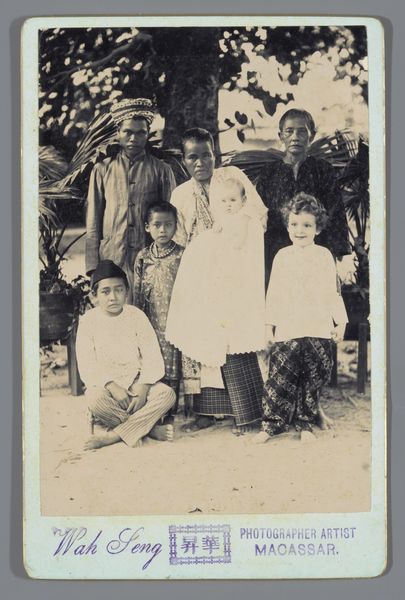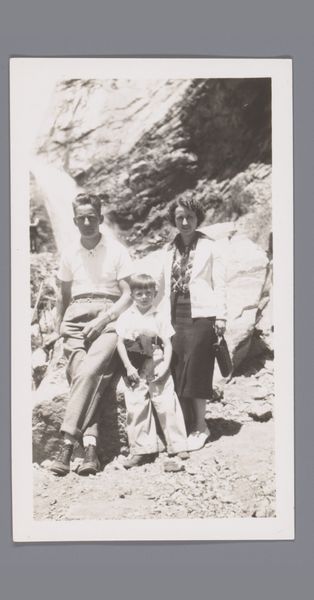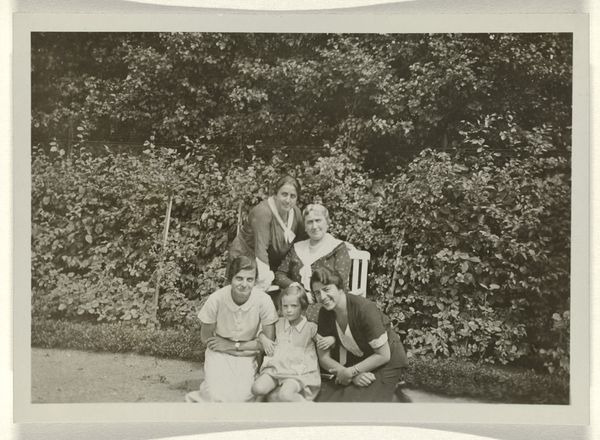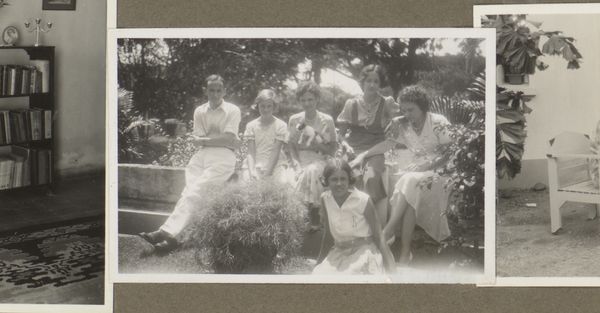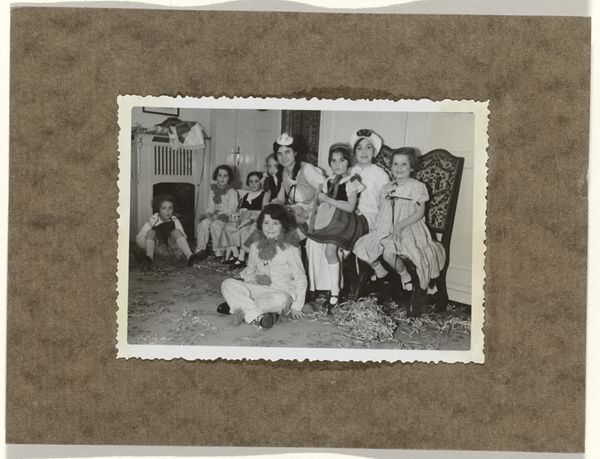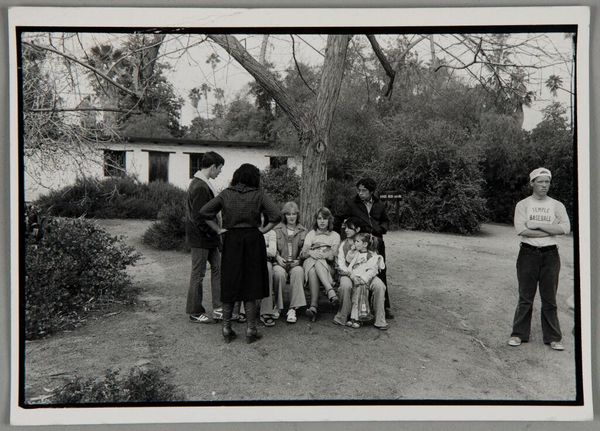
gelatin-silver-print, photography, gelatin-silver-print
#
portrait
#
print photography
#
gelatin-silver-print
#
landscape
#
photography
#
group-portraits
#
gelatin-silver-print
Dimensions: height 71 mm, width 113 mm
Copyright: Rijks Museum: Open Domain
Curator: This gelatin-silver print, titled "Groepsportret op plantage Accaribo," or "Group Portrait on Plantation Accaribo," offers a glimpse into the lives of a community in, possibly, 1931. Editor: The monochrome adds a weight to the photograph, doesn't it? There is a stillness, yet I can sense the latent energy and perhaps underlying socio-political dynamics at play within the group. Curator: Indeed. Its acquisition history reveals it came to the Rijksmuseum via a 2018 donation, adding it to a growing archive reflecting colonial history and visual representation. Note the subjects; they are formally posed but appear relaxed. The image speaks to how communities documented themselves, independent of official colonial portrayals. Editor: Exactly. The location itself, a plantation, demands critical viewing. While ostensibly a family gathering, the photograph is implicitly inscribed with the history of labor, exploitation, and the power dynamics inherent in that landscape. It begs the question: who held the camera? Curator: While we don't know the photographer, the subjects' attire and poses suggest agency and self-determination, a visual declaration against stereotypical portrayals. Their positioning suggests a desire to claim space within a setting historically fraught with oppression. Editor: It is an intriguing visual intervention in historical narratives. What looks, on the surface, to be a portrait conceals layers of resistance and the reclamation of identity. The photograph becomes more than a memory; it is a document of resilience. Curator: Ultimately, the power of this seemingly simple group portrait lies in its capacity to generate critical dialogues around the legacies of colonialism. Editor: I find the image powerful because it brings together history and identity. It compels us to delve deeper into how seemingly candid photos were actually political tools of self representation.
Comments
No comments
Be the first to comment and join the conversation on the ultimate creative platform.

